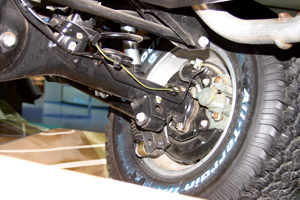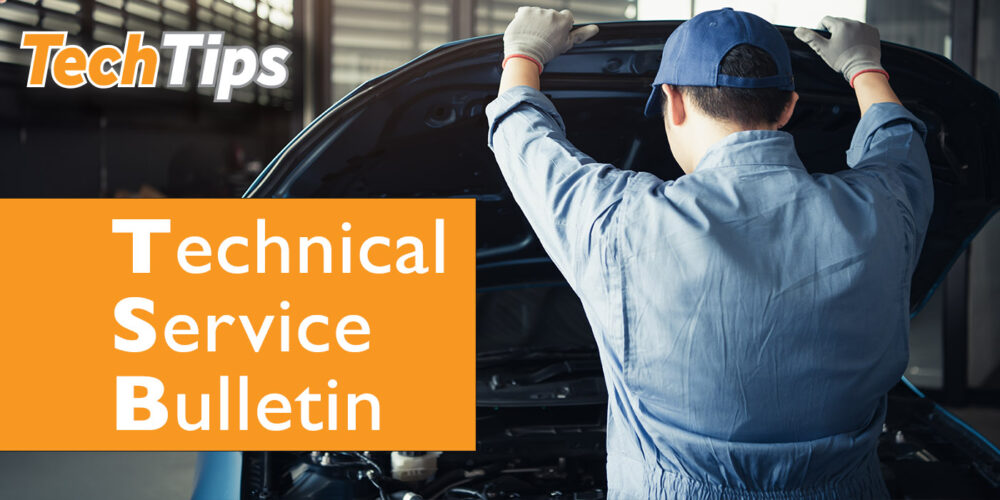 1. The customer will not be happy if he brought the car in for a knocking noise, was sold a couple hundred dollars worth of struts and or ball joints, etc., and the noise is still there. He takes the car elsewhere and the knocking noise is fixed with a couple of $20 sway bar bushings. Despite how bad the parts are, that guy is going to think he got beat. It’s important to address the complaint.
1. The customer will not be happy if he brought the car in for a knocking noise, was sold a couple hundred dollars worth of struts and or ball joints, etc., and the noise is still there. He takes the car elsewhere and the knocking noise is fixed with a couple of $20 sway bar bushings. Despite how bad the parts are, that guy is going to think he got beat. It’s important to address the complaint.
2. A weak shock absorber, for example, that does little to dampen bumps will increase feedback through the steering linkage to the driver. The driver may think he has a steering problem when, in fact, the real problem is poor ride control.
When bad shocks allow tires to leave the road, you obviously can’t control the vehicle properly. The driver won’t be able to steer, brake or control the vehicle. Furthermore, bad shocks create uneven tire wear and excessive wear on other suspension components.
3. Most people (70%) think the primary function of shocks and struts is to provide a comfortable ride, so replacement is seen as a low priority. Only 21% of the people surveyed by a leading shock manufacturer knew that new shocks and struts can improve handling and ride control.
4. If the protective rubber boot that seals the shaft is torn, cracks or leaks, road splash and dirt can enter the strut and accelerate wear. If the boot has failed, the joint is doomed to a premature death.
5. If a customer is really serious about improving the handling characteristics of his vehicle, you can recommend a performance handling kit that includes stiffer or adjustable shocks/struts, stiffer (or lowered) springs, a stiffer sway bar and stiffer suspension bushings.
6. After seven to 10 years of service, many of these older systems start to develop leaks that allow air to escape from the system. The same thing can happen to plastic air lines. Wiring connectors, solenoids, compressors and height sensors are also vulnerable to corrosion and vibration, which, over time, may lead to failures that disrupt the normal operation of the air ride system.
7. Do a simple bounce test. Though not a very scientific method for diagnosing weak dampers, a bounce test can be used to visually demonstrate the lack of resistance in badly worn dampers. Push down on one corner of the vehicle and rock the suspension several times, then release it. Repeat the test at each corner of the vehicle. Good dampers should stop the motion within a bounce or two. Weak ones won’t.
8. If brake lines have to be opened to disconnect them from the struts during strut replacement (cutting the brake line mounting ear can sometimes make this unnecessary), you’ll have to bleed the brakes afterward.
9. Don’t reuse the bearing plates unless they are in perfect condition. Pay close attention to the condition of the upper bearing plates. These support the weight of the vehicle, and are often in poor condition. A bad bearing plate can cause steering stiffness, noise and poor steering return (memory steer).
10. Inspect the tires. Uneven wear or toe wear would tell you the wheels are out of alignment. Uneven surface wear across the face of the tire can indicate weak ride control components. One sign is tire cupping as a result of improper tire balancing or improper damping force in the shock absorber. Also, tires may have inside or outside excessive edge wear from improper wheel alignment. This should also prompt you to suspect things like worn tie rod ends, collapsed control arm bushings, or maybe a bent strut or spindle.
11. When installing a new cartridge in a rebuildable strut, about 3 oz. (a shot glass full) of ATF must be poured into the strut housing to aid heat transfer from the cartridge.
12. When installing a new cartridge in a rebuildable strut, follow the installation instructions regarding the use of spacers or washers under the body nut on rebuildable struts. Differences in height among replacement cartridges make the use of such spacers necessary.
13. Shock absorbers affect weight transfer from side to side when cornering and from front to back when braking or accelerating. When shock absorbers are worn, the weight transfer is excessive. This can overload the front tires while the rear tires lose grip, and go from sticking to sliding, causing brake lock-up and loss of control of the vehicle. Tire adhesion is critical to safety and handling, especially in sudden avoidance maneuvers.
14. Typically when consumers choose tires, they may have special needs. As such, they may want ultimate road comfort and thus may need a shock absorber that provides that kind of performance. As you move up to more performance in tires, customers may prefer a shock absorber with more control, while delivering a certain level of ride comfort.
15. The tougher noises are the knocking and banging noises. Usually, you won’t be able to duplicate these type of noises in the shop since the noise only occurs when the load on the wheel is released and applied, like on a washboard road or pothole. Sometimes you may be able to find some looseness by raising the chassis and lifting the wheels with a large pry bar. Any slop in the strut mounts or ball joints will show up. Is the noise coming from inside the strut housing?
Check if the car had the struts replaced. It could be that the insert is moving inside the housing as a result of a loose cap nut or the wrong combination of spacers inside the strut housing.













